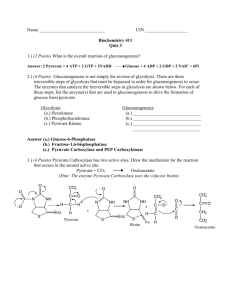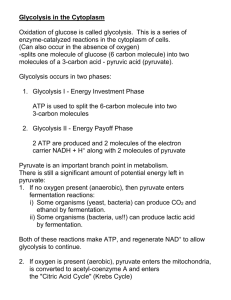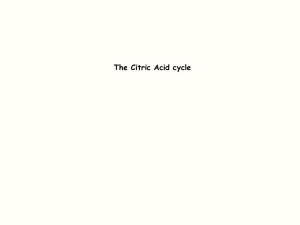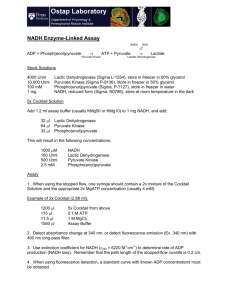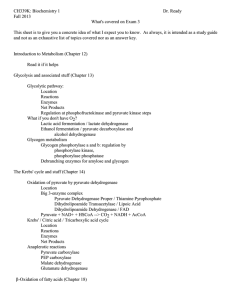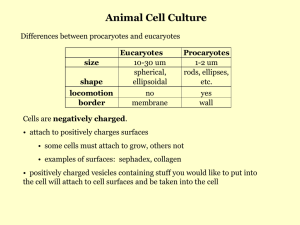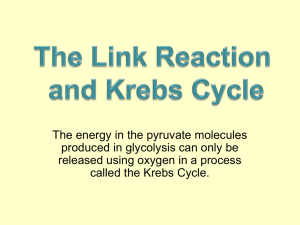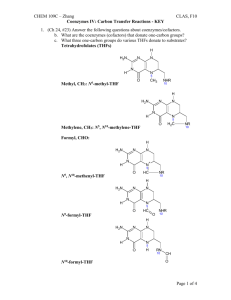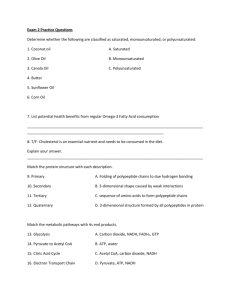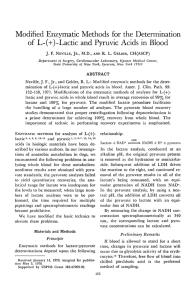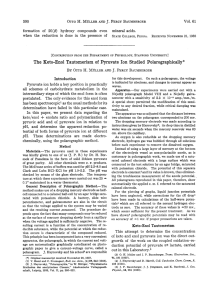Sodium Pyruvate - Mediatech, Inc.
advertisement
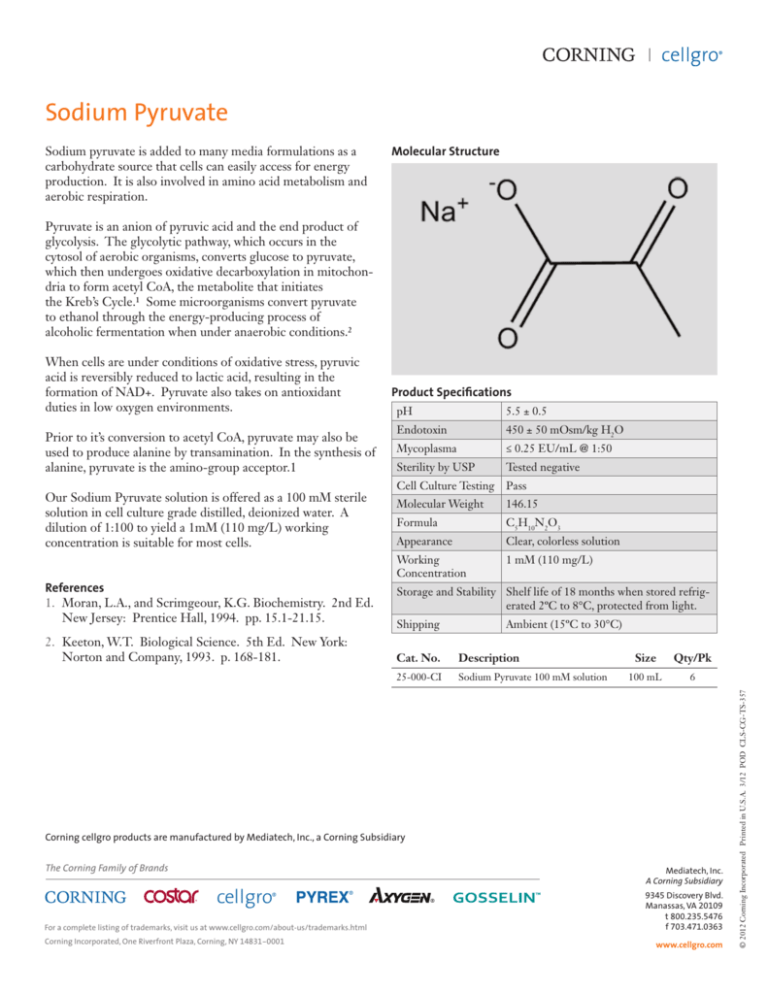
Sodium Pyruvate Sodium pyruvate is added to many media formulations as a carbohydrate source that cells can easily access for energy production. It is also involved in amino acid metabolism and aerobic respiration. Molecular Structure Pyruvate is an anion of pyruvic acid and the end product of glycolysis. The glycolytic pathway, which occurs in the cytosol of aerobic organisms, converts glucose to pyruvate, which then undergoes oxidative decarboxylation in mitochondria to form acetyl CoA, the metabolite that initiates the Kreb’s Cycle.¹ Some microorganisms convert pyruvate to ethanol through the energy-producing process of alcoholic fermentation when under anaerobic conditions.² Prior to it’s conversion to acetyl CoA, pyruvate may also be used to produce alanine by transamination. In the synthesis of alanine, pyruvate is the amino-group acceptor.1 Our Sodium Pyruvate solution is offered as a 100 mM sterile solution in cell culture grade distilled, deionized water. A dilution of 1:100 to yield a 1mM (110 mg/L) working concentration is suitable for most cells. References 1. Moran, L.A., and Scrimgeour, K.G. Biochemistry. 2nd Ed. New Jersey: Prentice Hall, 1994. pp. 15.1-21.15. 2. Keeton, W.T. Biological Science. 5th Ed. New York: Norton and Company, 1993. p. 168-181. Product Specifications pH 5.5 ± 0.5 Endotoxin 450 ± 50 mOsm/kg H2O Mycoplasma ≤ 0.25 EU/mL @ 1:50 Sterility by USP Tested negative Cell Culture Testing Pass Molecular Weight 146.15 Formula C5H10N2O3 Appearance Clear, colorless solution Working Concentration 1 mM (110 mg/L) Storage and Stability Shelf life of 18 months when stored refrigerated 2ºC to 8°C, protected from light. Shipping Ambient (15ºC to 30°C) Cat. No. Description 25-000-CI Sodium Pyruvate 100 mM solution Size Qty/Pk 100 mL 6 Corning cellgro products are manufactured by Mediatech, Inc., a Corning Subsidiary The Corning Family of Brands ® cellgro® Mediatech, Inc. A Corning Subsidiary ® For a complete listing of trademarks, visit us at www.cellgro.com/about-us/trademarks.html Corning Incorporated, One Riverfront Plaza, Corning, NY 14831-0001 ® 9345 Discovery Blvd. Manassas, VA 20109 t 800.235.5476 f 703.471.0363 www.cellgro.com © 2012 Corning Incorporated Printed in U.S.A. 3/12 POD CLS-CG-TS-357 When cells are under conditions of oxidative stress, pyruvic acid is reversibly reduced to lactic acid, resulting in the formation of NAD+. Pyruvate also takes on antioxidant duties in low oxygen environments.
